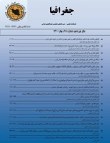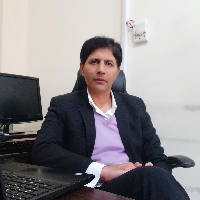Analysis of effective Factor in quality of life and well-being in Iran Metropolis
Cities face a number of problems that undermine the quality of urban life, social inequalities, urban crime, poor environment, and traffic congestion (Psatha, 2015: 2). The rapid growth and expansion of urbanization and urbanization of the world has created many problems and difficulties in different countries of the world, especially in developing countries. Cities in these countries are facing the spread of various social anomalies, housing shortages, the spread of suburbanization and informal settlement, all kinds of pollution and environmental crises, spatial inequality, reduced quality of life and welfare, and so on. In recent decades, the literature on measuring inequality has increased significantly (Mussard & Xu, 2004: 201). One of the important suggestions in the field of measuring poverty and welfare by age (1976) has been presented. The age index is a suitable model for applied research (Mussard & Xu, 2004: 201). Measurement of poverty has been active in research since Amartia Sen proposed an obvious approach to welfare research in 1976 (Xu & osberg, 2000: 2). The aim of this study was to analyze the cost factors affecting quality of life and well-being in Iranian metropolises. Using the quantitative age index and taking into account the variables of food and tobacco costs, clothing and footwear costs, housing costs, water, fuel and lighting of a residential house, costs of accessories and furniture and services Household use, health care costs, transportation and communication costs, entertainment and cultural services costs of households and costs of miscellaneous goods and services in the metropolises of Tehran, Mashhad, Isfahan, Karaj and Shiraz to evaluate the effective factors The quality of life and welfare in these metropolises should be addressed. The research sought to answer the question of which of the cost-effective factors on quality of life and well-being in the studied metropolises had the greatest effect.
The research has a quantitative-analytical nature and the statistical population of the research consists of the first five metropolises of Iran in terms of their population. The studied variables are the official data of the first group (food and tobacco costs); The second group (clothing and footwear costs); The third group (housing, water, fuel and lighting costs of a residential house); Fourth group (costs of furniture and services used by households); Group 5 (health care costs); Group 6 (transportation and communications costs); The seventh group (the cost of entertainment, entertainment and household cultural services) and the eighth group (the cost of miscellaneous goods and services).
In the metropolis of Tehran, the housing, water, fuel and lighting group of a residential house with the amount of 1.4092 has affected household welfare expenditures more than other groups in this city. Expenditures on household appliances and services are in the last place with 0.0353. In the metropolis of Mashhad, the second largest city in Iran, the group of housing, water, fuel and lighting of residential houses with the amount of 0.9202 more than other groups of household welfare expenditures in this city has been affected. The eighth group, the costs of miscellaneous goods and services, was in the third place with 0.1694. In the metropolis of Isfahan, the third largest city in the country, the housing, water, fuel and lighting of residential houses with the amount of 0.7911 has affected the welfare costs in this city more than other groups. The group of food and tobacco costs with the amount of 0.7003 after the housing group has the most impact on welfare. In the metropolis of Karaj, the fourth largest city in the country, housing, water, fuel and lighting of a residential house with the amount of 1.278 more than other groups of household welfare expenditures in this city has been affected. The group of food and tobacco costs with the rate of 0.6915 after the housing group has the most impact on welfare. In the metropolis of Shiraz, which is the fifth largest city in the country, housing, water, fuel and lighting of a residential house with the amount of 0.8599 has affected more than other groups of household welfare expenditures in this city. The group of food and tobacco costs with the rate of 0.6561 after the housing group has the most impact on welfare.
In the metropolises of Tehran, Mashhad, Isfahan, Karaj and Shiraz, the costs of the housing sector have affected the welfare and quality of life of the family more than other sectors, and solving the housing problem of households in these metropolises is the main priority of the government.
Cost , welfare , Quality of life , Metropolis , Iran
- حق عضویت دریافتی صرف حمایت از نشریات عضو و نگهداری، تکمیل و توسعه مگیران میشود.
- پرداخت حق اشتراک و دانلود مقالات اجازه بازنشر آن در سایر رسانههای چاپی و دیجیتال را به کاربر نمیدهد.



